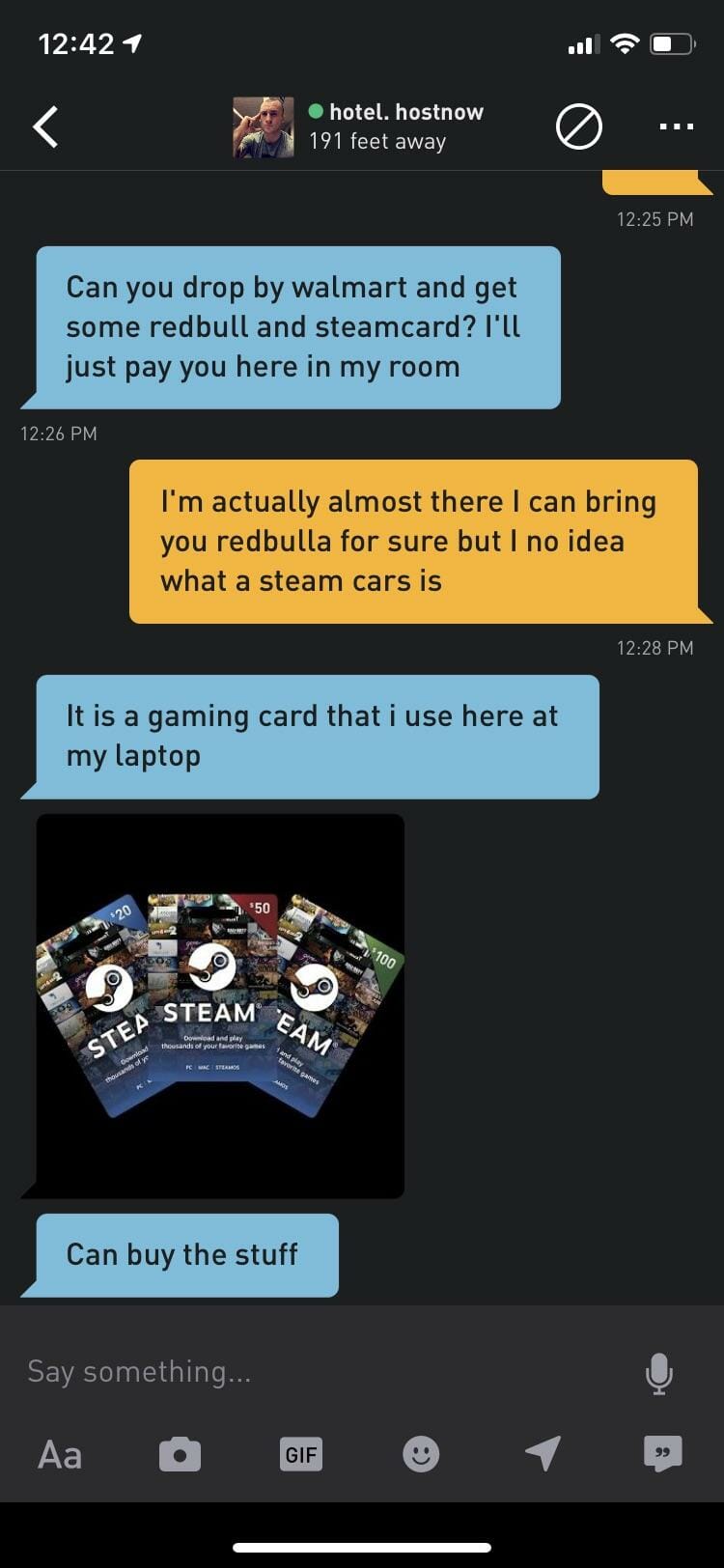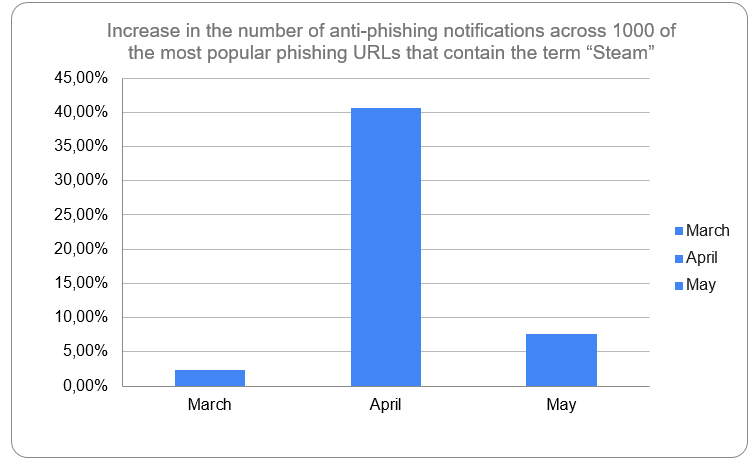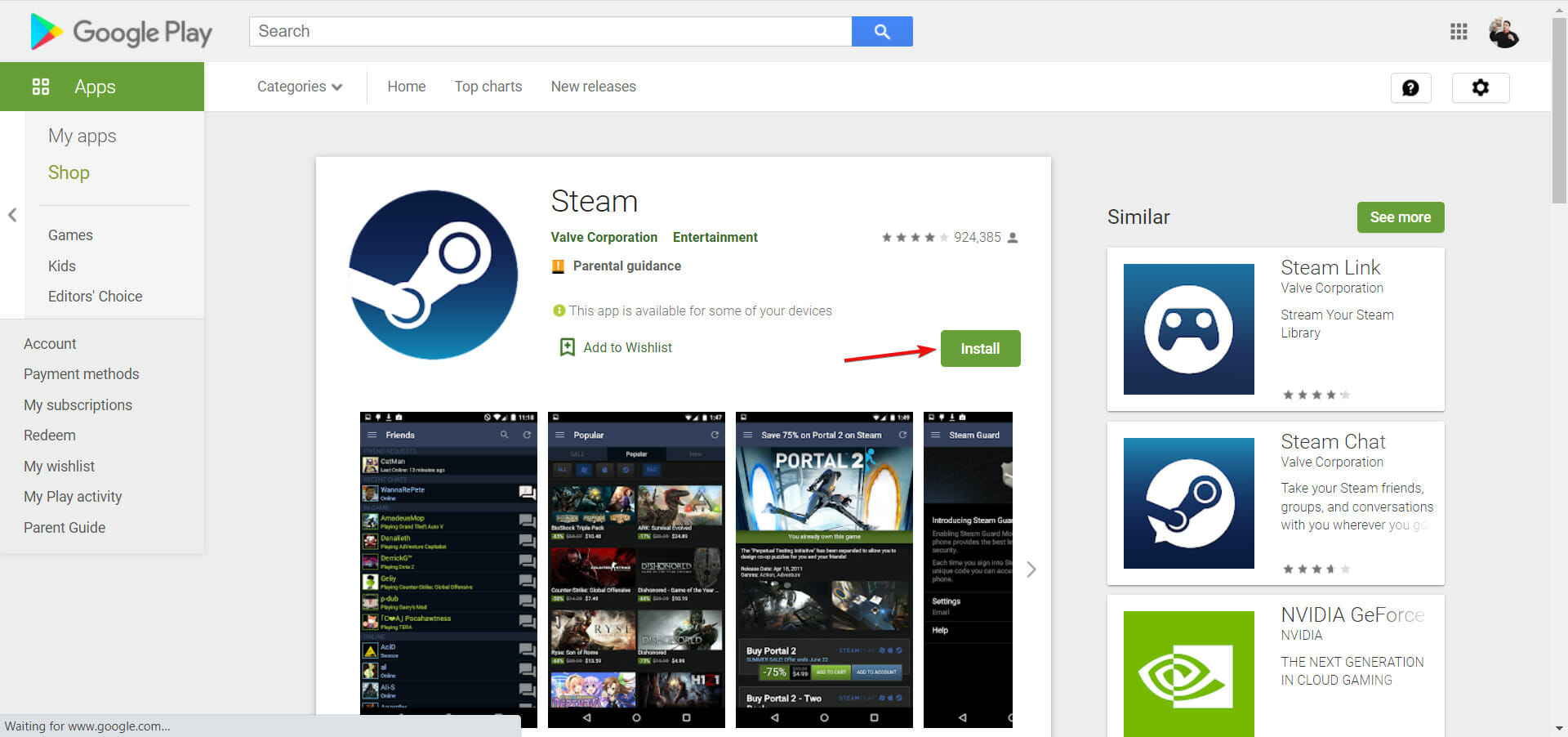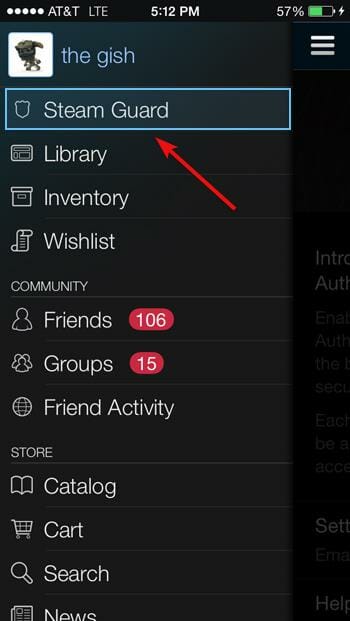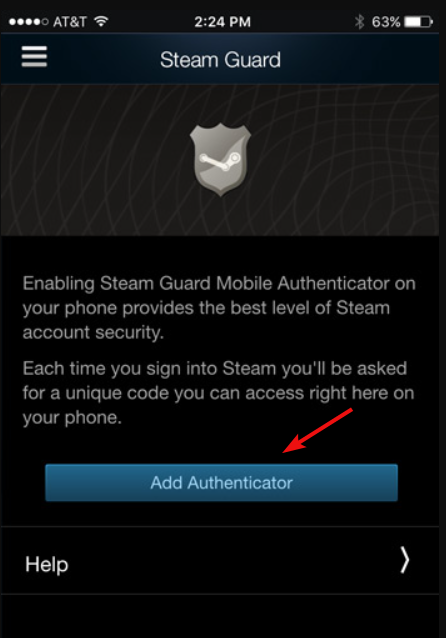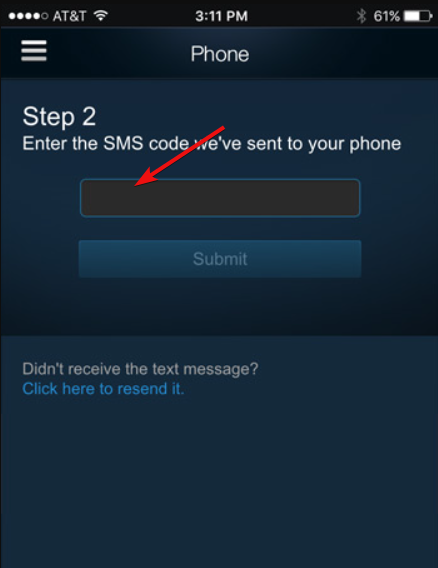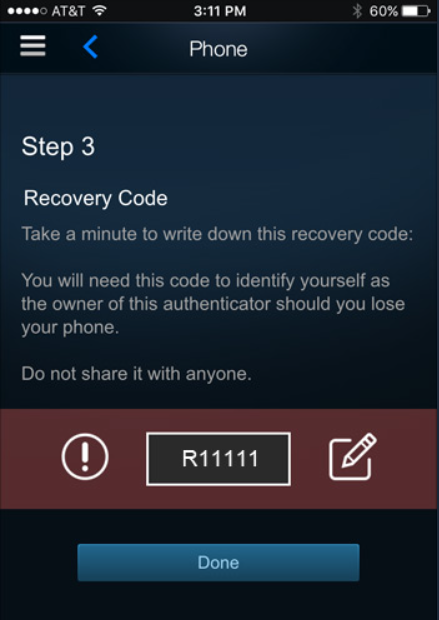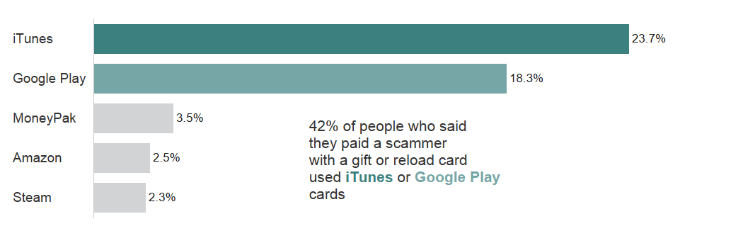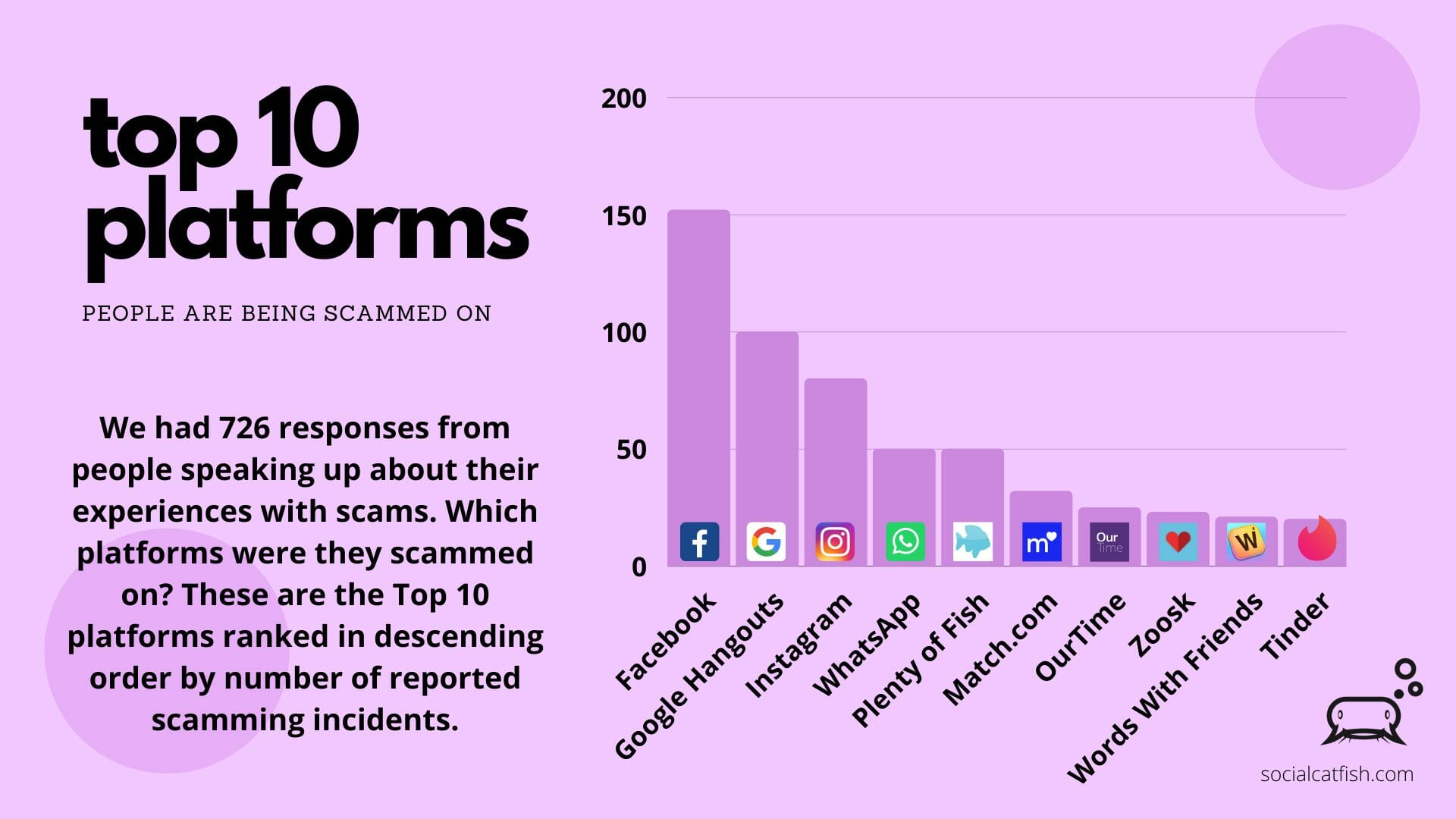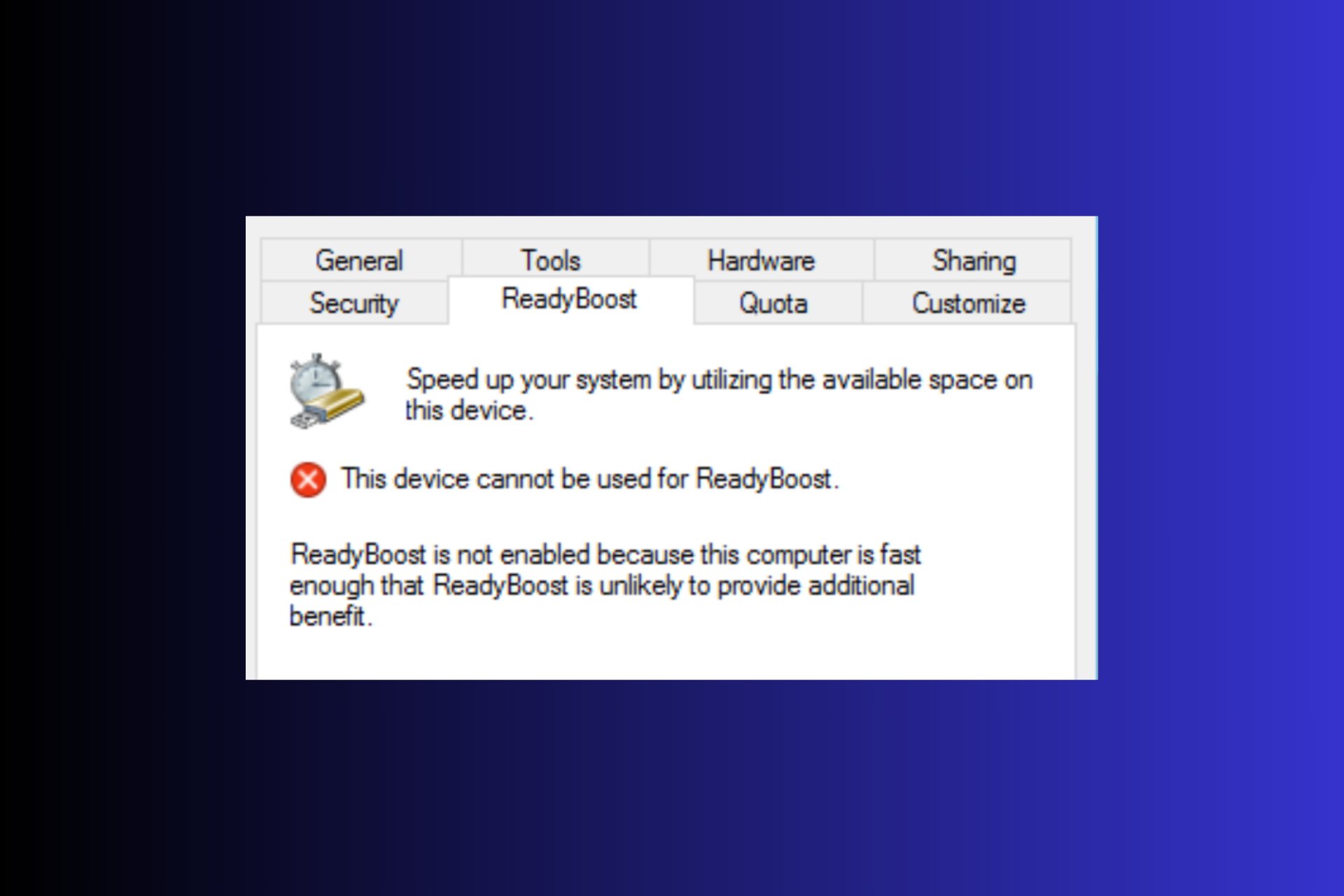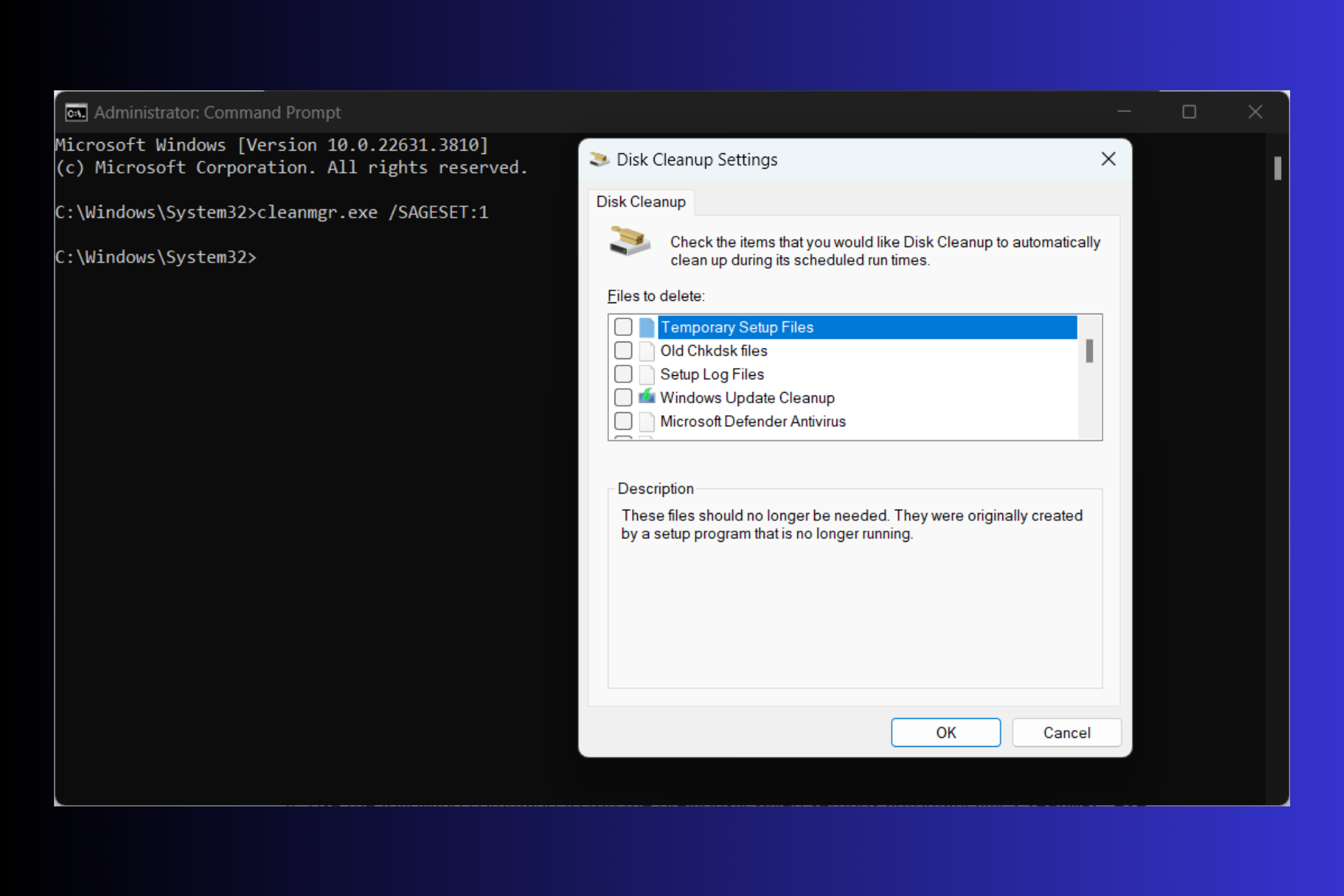Steam scams explained: Best tips to keep your cards safe
10 min. read
Updated on
Read our disclosure page to find out how can you help Windows Report sustain the editorial team Read more
Key notes
- If someone demands payment through Steam gift cards that is a clear sign of a scam.
- Fraudsters will pretend to be agency or businesses officials that can’t receive any other payment method.
- There are plenty of other scamming methods on Steam and other platforms and you will learn about them in this article.

The Steam gift cards are perfect if you want to make a gamer or, why not, yourself, happy. And that’s because it’s the most popular gaming platform.
However, lately, Steam received more and more reports of scams with wrongdoers contacting unsuspecting victims, convincing them to buy Steam Wallet Gift Cards.
They pretend that the cards will help users cover a lot of payments including bail, debt, and receive money from sweepstakes.
The scammers pose as officials for certain agencies and even the I.R.S. which should sound suspicious enough.
The modus operandi implies buying the gift cards from a local shop in the area of the victim and then scratching the codes and communicating the data over the phone.
Of course, if all that sounds familiar, you have been the victim of a scam and you will never get anything in return.
What is a Steam card and how does it work?
Essentially, Steam Gift Cards and Wallet Codes are like any gift certificates, but they can only be redeemed on Steam.
Users often have one important question: Can Steam cards be converted into cash? And the answer is yes; in fact, that is the whole point of the cards.
After you redeem the card, its value is converted into cash within your Steam account so you can use it to purchase games, software, and various other items within the store.
But once again, we emphasize the fact that the cards can only be activated on Steam and don’t have any value within other services.
Why would a scammer want a Steam card?
The question is legitimate because you would think that the scammer will just buy games and software on Steam but that’s not the case.
Once they get the code and the pin from your Steam card, they immediately sell the data online for a smaller amount of money.
And as it seems, they are in real demand for people who just wait for a bargain to get that awesome game they’ve been waiting to purchase.
Another way of getting the real cash is to immediately buy items and then send a sad letter to the Steam support team to freeze the transaction and send back the money into their account.
The story often involves an alleged kid who took his parents’ credit card and made the purchase without their knowledge or something similar.
Here are the top platforms where Steam cards scams are happening:
- Steam
- Paypal
Steam scam statistics
1. What are the most common Steam scams?
1.1 The PayPal scam
Unfortunately, there are no precise statistics on Steam scams but the PayPal scam is one of the most popular among fraudsters.
It is actually very simple to create a fake invoice and even on the official PayPal forms you can add text to the Terms and conditions and Note section below.
That is where the scammer can get creative and reinforce your belief that the money has been sent but, as you can see from the screenshot above, they will take 24 hours to reach your account.
In the meantime, they will put pressure on you to send them the items you’ve bargained for because they’ve provided sufficient proof that they have sent the money, right?
Wrong! You will never see the money and your precious item will be lost forever because the Steam support time will not duplicate the item.
Another trick here is to actually send you the money, providing a real invoice, but then charge it back.
1.2 The Phishing scam
When it comes to phishing, in a press release released by Kaspersky, they raised awareness about the rising number of Steam phishing URLs.
Forums, chats, Facebook groups, and emails can all be used by wrongdoers to invite you to websites that look almost exactly like the original ones.
However, the more you look at it, you will start noticing some elements that are not as they should be, starting with a tiny difference in the URL address.
Then, as a pretext of redeeming some bogus prize you just won, they invite you to log into your Steam account.
Of course, this way, your credentials will be stolen, and your account emptied out in a matter of minutes.
1.3 Pay with gift card scam

In a recent consumer alert from the Federal Trade Commission, you can find out how the scam is orchestrated and mostly how you can be approached.
Obviously, if someone asks you to pay something by giving them the data of your Steam or any other gift card for that matter, it’s definitely a scam.
1.4 Steam Wallet Scam
The Steam Wallet scam is as simple as it gets. Out of nowhere or with prior convincing from the fraudster, you get an offer for an item for real cash.
If you don’t know that already, you can’t send cash within Steam so it’s only you parting with your item in exchange for a wild assumption that you will be paid.
1.5 The Steam administrator scam
This is a more elaborate scam that we learned through one of the Malwarebytes blog posts about common scams within the Steam realm.
The scammer approaches you with a sorry note that he reported you for a scam by mistake (ironic, isn’t it?) and your account will be suspended shortly if you don’t do anything about it.
This person also suggests contacting a Steam or game developer administrator who will clear out your problem.
Obviously, that user switches to a very well disguised profile of an alleged official that will threaten you with account deletion unless you send details that contain your credentials.
Finally, the outcome is the same. You lose everything from your account and eventually it gets closed so that the scammer can cover its trace.
2. What are the most affected countries by Steam scams?
Although we don’t have any data about the top countries affected by Steam scams, starting with the pandemic, the reported cases multiplied considerably.
For instance, in a news report from the FTC, in the first nine months of 2021, consumers lost $148 million only from gift card scams.
That was more than in the whole year of 2020. According to their data, almost 40,000 consumers filed reports for such scams in the U.S. and that is not counting the cases with users who didn’t bothered to complain and try to get their money back.
In another news report from the Australian Competition & Consumer Commission Australians lost more than $5 million on gift card scams.
On top of the most used gift card scams are the ones from iTunes, Google Play, and Amazon but Steam also holds an honorable fourth place on the list.
How do I secure my Steam account?
After the installation of the desktop app, you will be prompted to verify your email, and Steam Guard will be activated.
That means that if someone attempts to log into your account from another device, they will need to provide a code sent to either your phone or email address.
However, you can also install the Steam Guard Mobile Authenticator on your Android or iOS. Here’s how you can do that:
- Download the Steam app from Google Play or App Store.
- After you install it and log into your account, click on the Menu button and tap on Steam Guard.
- Now, tap the Add Authenticator button.
- Next, add your phone number and touch the Add phone button.
- Lastly, you will receive a confirmation code on your phone that you will need to enter in the Step 2 window.
- If you entered the code correctly, you will receive a very important recovery code which you need to store safely for later use.
- When the process is done, you will receive another code, that will refresh every time you log into your Steam account.
- So, every time you log in, Steam will request the code so you will need to open your mobile app and get the code from there.
It may seem a little bit tedious but this way, no one can steal your account unless they have access to your phone or, of course, if you give them your code.
Apart from the mobile Steam Guard app, the best protection from scammers is to use your better judgment.
Look carefully at the websites that ask you for your credentials, don’t engage in conversations that lead to them asking you for such favors.
Also, if an offer from a stranger seems to be too good to pass, then it definitely is and you should definitely end the conversation there.
Avoid dealing any items games or goods outside the Steam platform. The risks outweigh the benefits almost all the time.
Never, ever, give your account details and screenshots that contain them to anyone. The officials from Steam would never ask for such details.
Be careful about who you make friends with. Someone who added you to their friend’s list might not be doing that because they admire your play style.
But sometimes, all the caution in the world can’t help you from malware and virus attacks on your PC. That’s why we also prepared a short list of the best antiviruses for gamers.
What is the best security software for gamers?
- ESET HOME Security Essential – Although it’s light on your system, it will protect your PC from any possible intrusions.
- Bitdefender Antivirus Plus – Apart from the much-needed Game Mode, you will also have multi-layered protection impossible to overcome by any wrongdoers.
- Total AV: Real-time virus protection, it takes care of your privacy with a built-in VPN, and also prevents in-game lag with its own disk cleaning feature.
You may also consult our full list including the best antiviruses for gamers and check out all the other offers.
What are the other scam platforms you should worry about?
When it comes to gift card scams, according to an FTC report, iTunes and Google Play definitely lead the way.
And the operation mode is identical. The fraudster is demanding payment with a gift or reload card, scammers posing as business representatives, family members, well-known agencies, or simply friends.
For instance, if you are contacted by IRS and they tell you that they cannot accept other payments because of your tax problems, that’s an obvious scam.
According to FTC, sometimes, the wrongdoers even call the iTunes cards payment vouchers and instruct the victim to buy the cards from different stores and not talk about this with anyone, just to avoid alerting the salespersons from the store.
As for the most notorious scamming platforms, a study released by SocialCatfish.com offers an insight picked up from asking 726 of their readers about this experience.
Facebook clearly leads the way with 151 victims and most of them were the victims of profile cloning.
The scammer uses the photos and data from the profile of the victim to create an almost identical fake one, then asks the friends for money or sends malicious links.
On Google Hangouts there were 99 scam reports. Here, romantic impostors fall in love quickly, gaining the trust of the victims and asking for money or personal information.
The scammers have a different approach on Instagram. They pretend to be representatives of a famous brand and offer giveaways in exchange for important personal data that involve credit card data.
You should also be aware if you receive a six-digit verification code on WhatsApp from a friend who desperately needs it to get back into his/hers account.
Most likely, they already broke into their account, and if you give them the code, they will also hijack yours and demand money from your friends, pretending to be you.
The most important thing is that if you are the victim of any of these scams, report it immediately to the authorities.
You can always contact FTC, IC3, IdentityTheft.gov, and even the FBI and make a complaint because these scammers have to be stopped.


